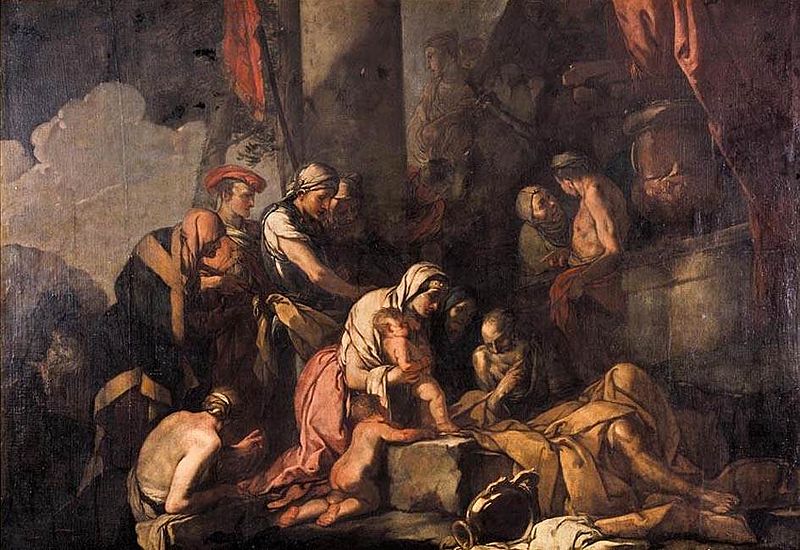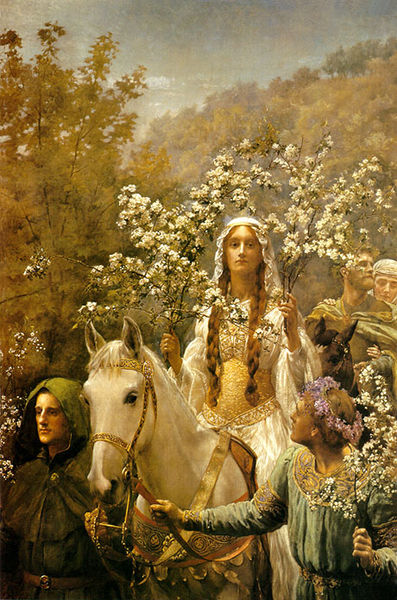
The scales of Libra are sometimes associated with Tiresias, the aged prophet — shown here being presented with the child Narcissus. Tiresias is presented as a complexly liminal figure, with a foot in each of many oppositions, mediating between the gods and mankind, male and female, blind and seeing, present and future, and this world and the Underworld.
Libra, the scales of justice, is the astrological sign that governs those born September 23 to October 22 each year.
It has been suggested that the scales are an allusion to the fact that when the sun enters this part of the ecliptic at the autumnal equinox, the days and nights are equal. In Roman mythology, Libra is considered to depict the scales held by Astraea (identified as Virgo, the previous sign of the zodiac), the goddess of justice. Because scales always seek balance, they are associated with oppositions: life/death, earth/otherworld, sight/blindness, ignorance/foreknowledge, male/female, humanity/divinity, and so on. Because the mythological prophet Tiresias was said to be both blind and foreknowing as well as having lived for 7 years as a woman who had 3 children (the result of a curse by Athena or Hera), he was also associated with these oppositions and balances.
In one version of the sex-change story, Tiresias sees 2 snakes copulating and he strikes them with his staff. For some reason, this offends Hera who punishes him by changing him into a woman. The association of his staff with the 2 snakes has also led to his association with the caduceus (the 2 snakes winding about a staff, a symbol of communication but often confused with the single-snaked symbol of healing).


